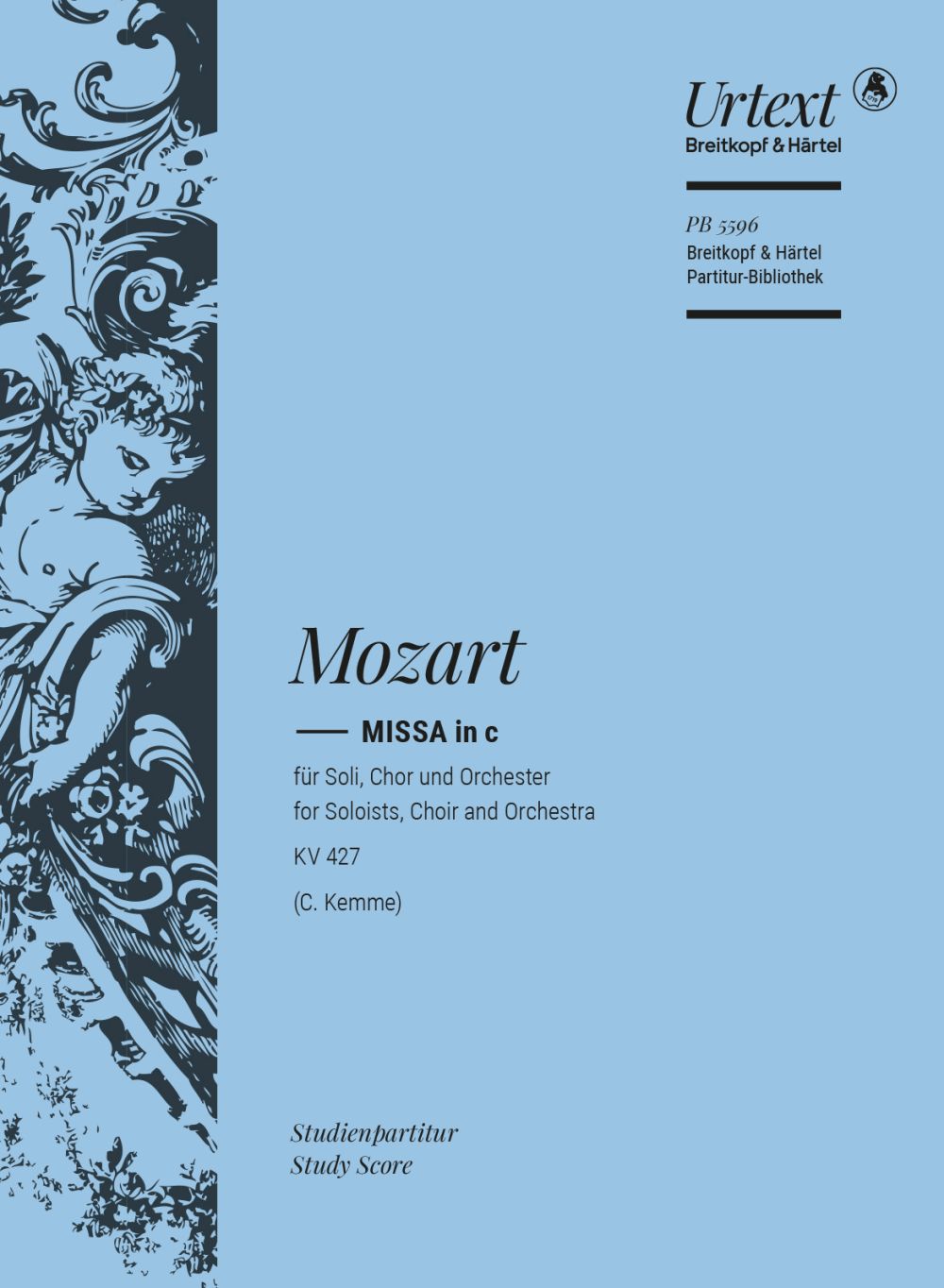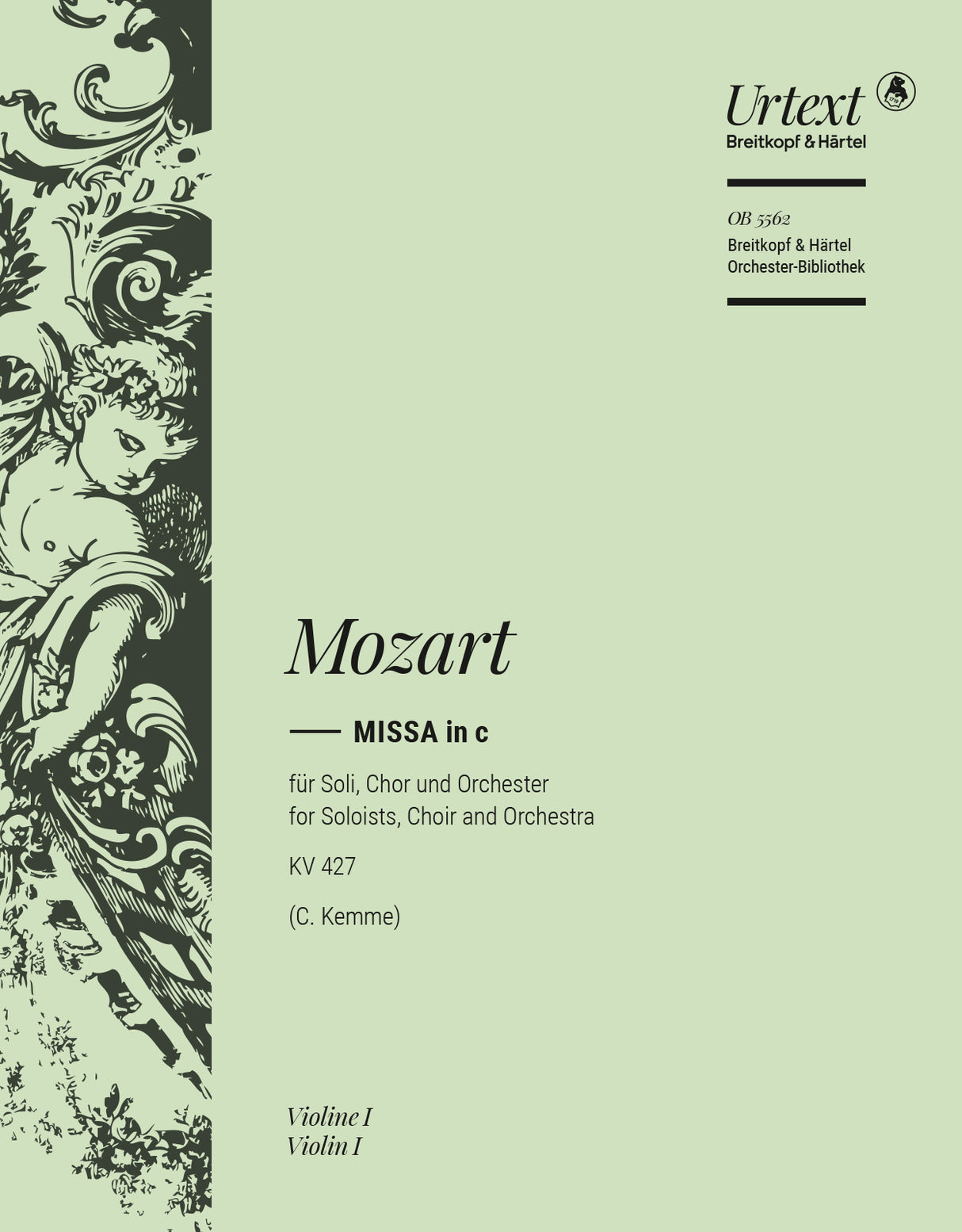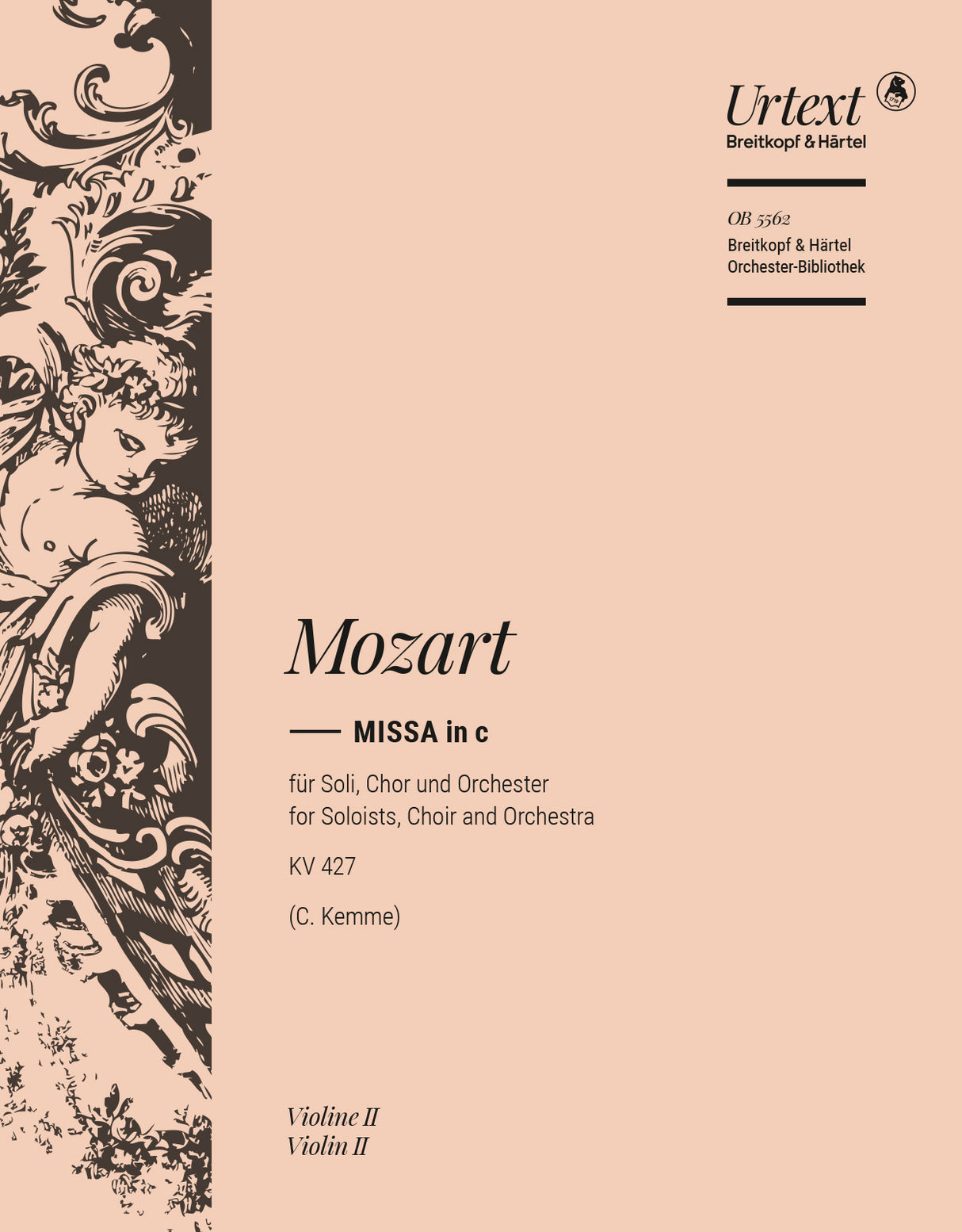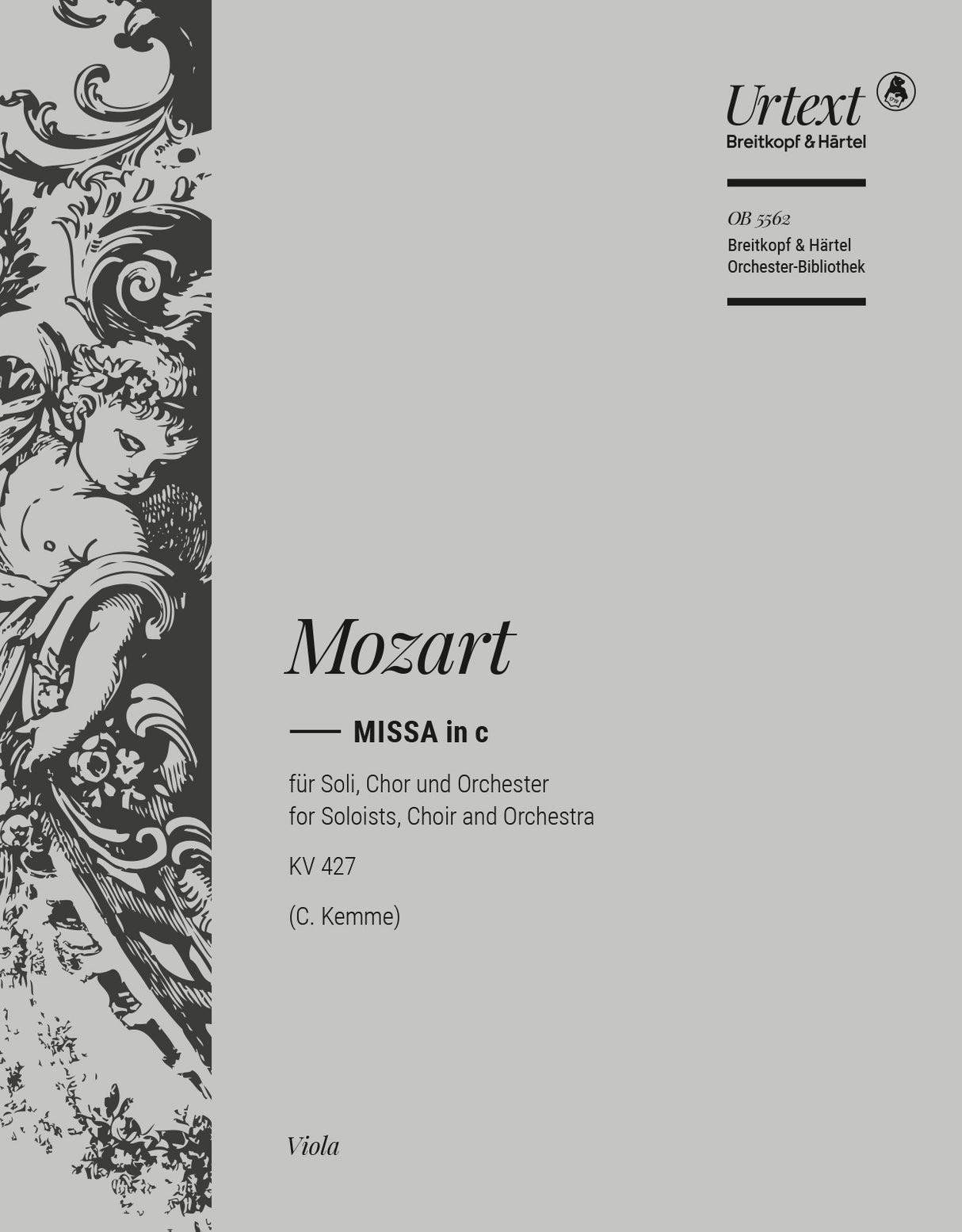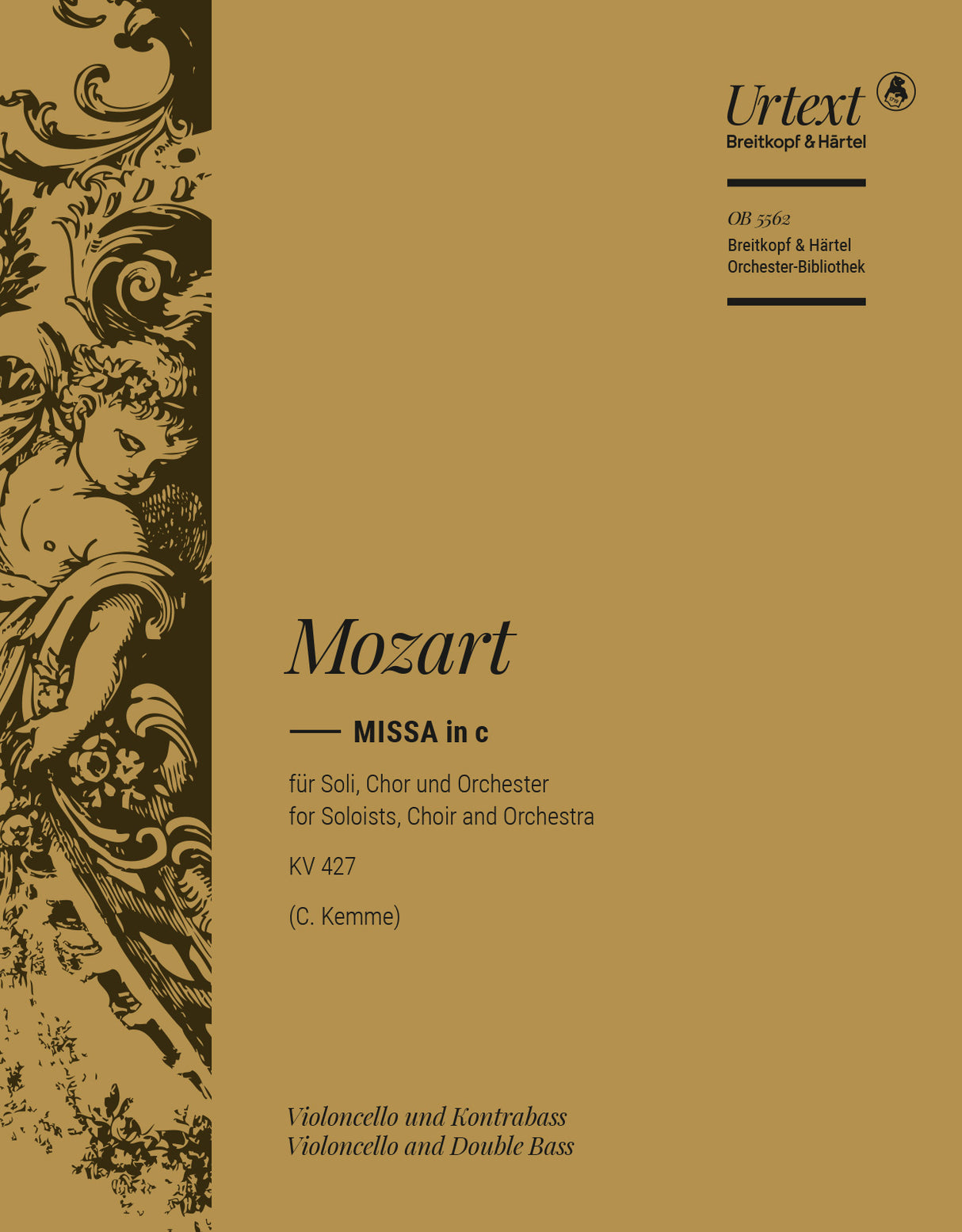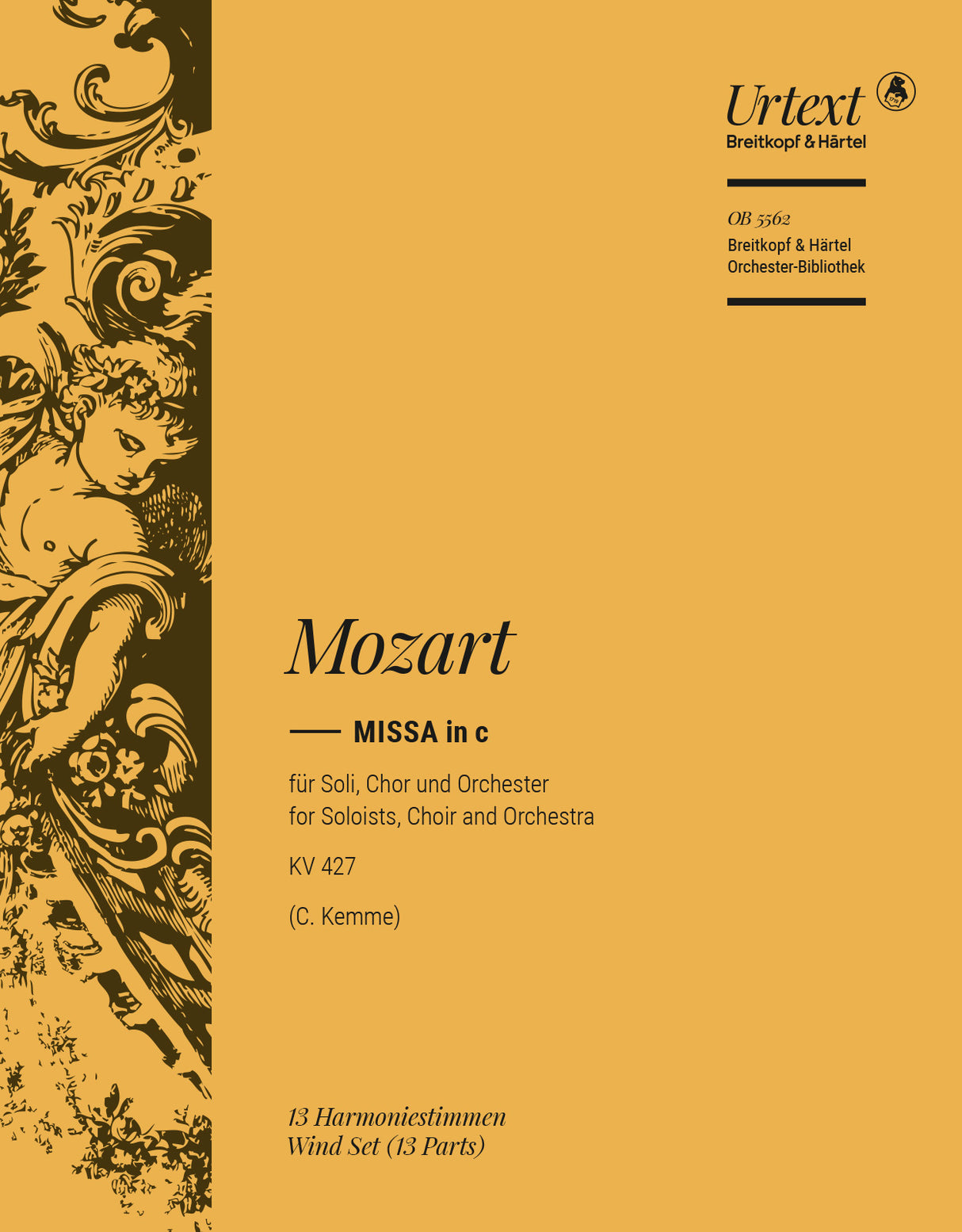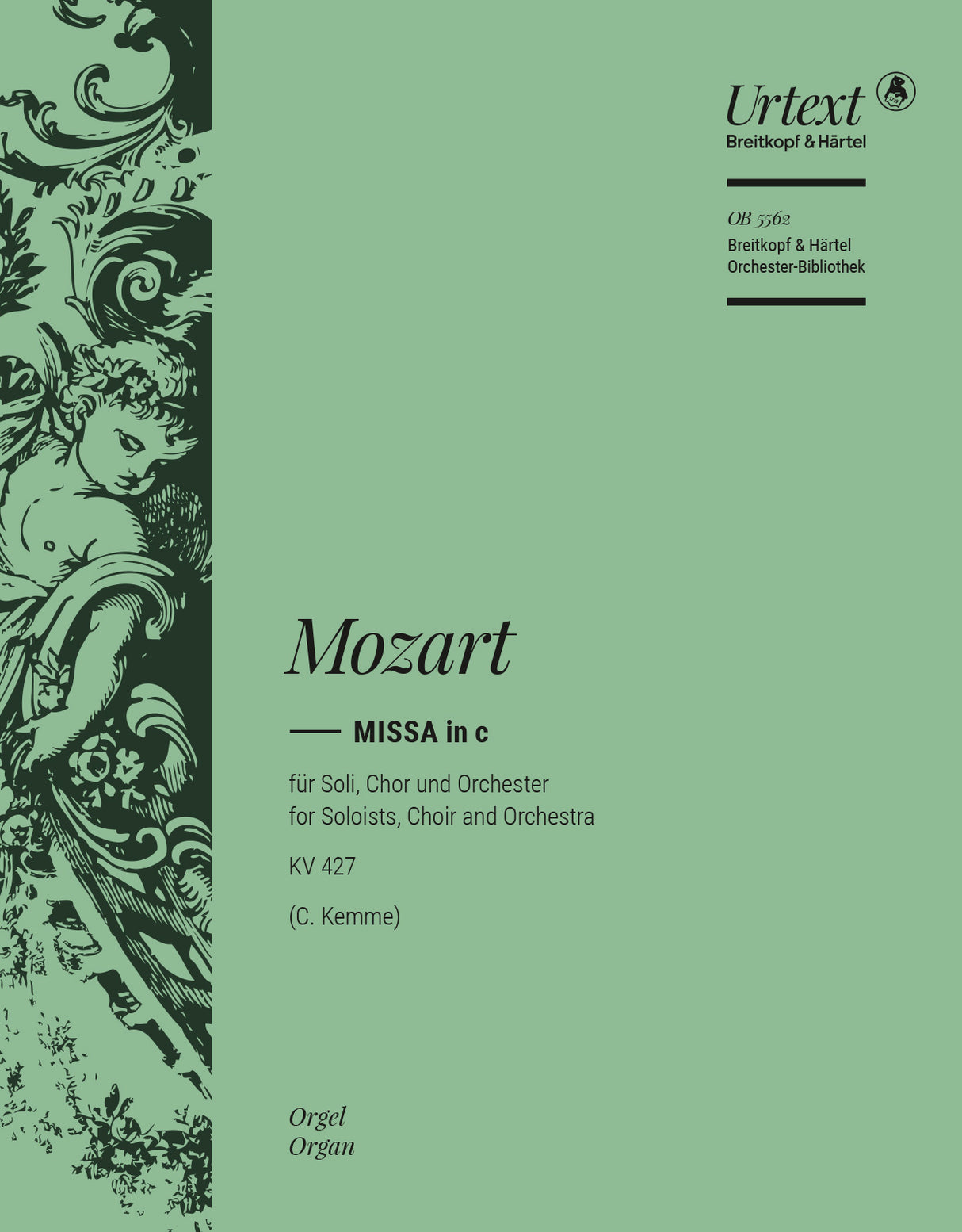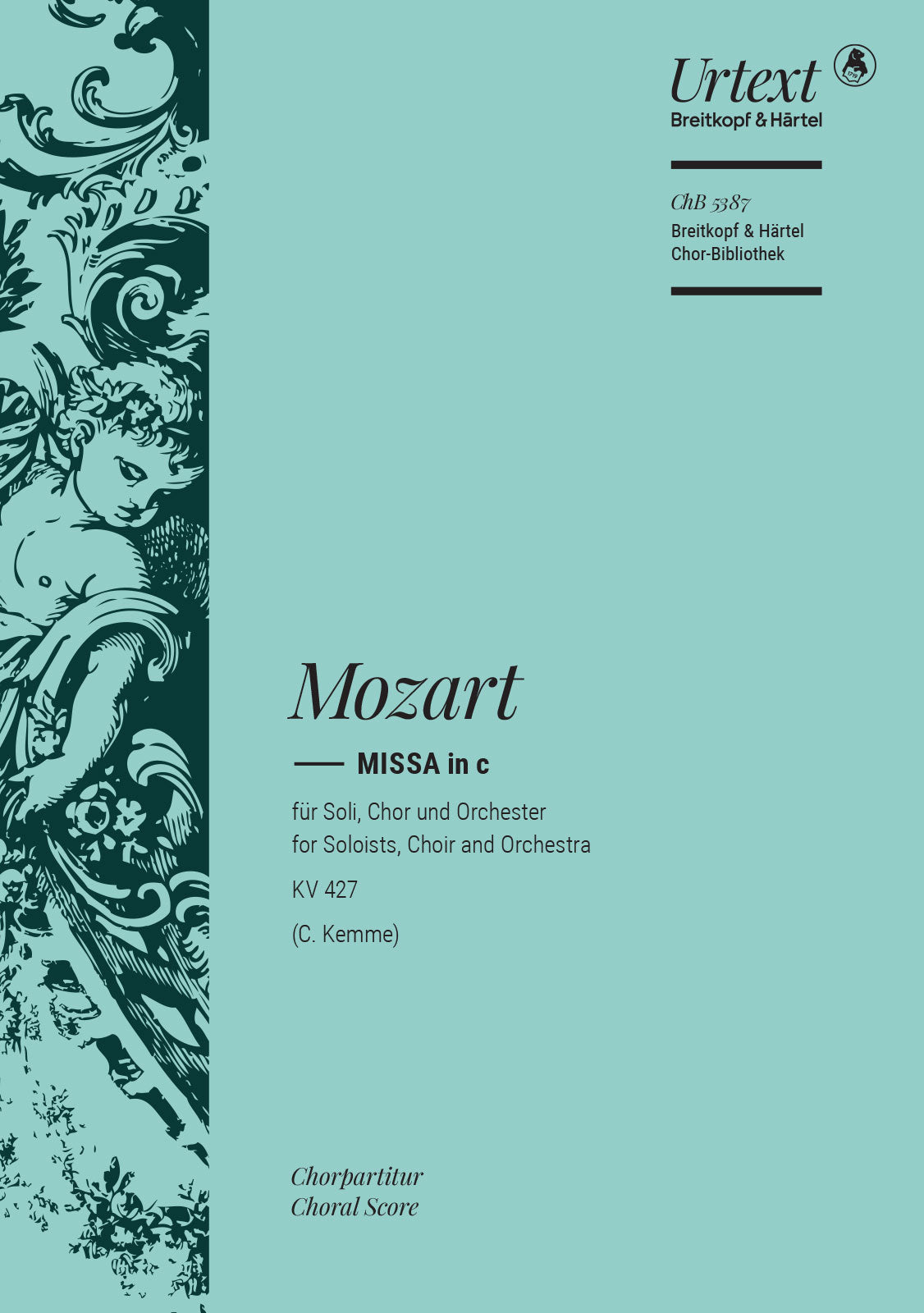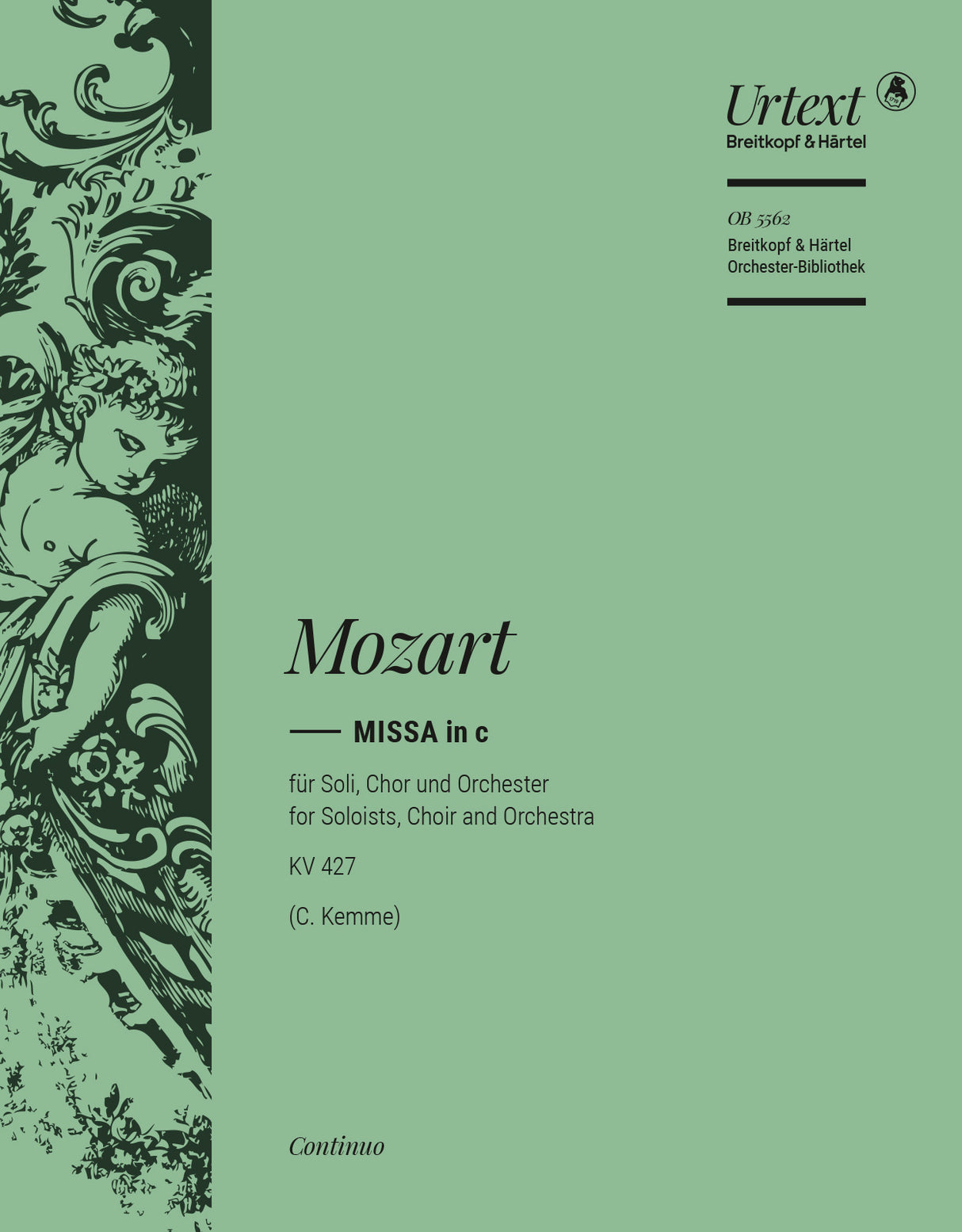Mozart: Great Mass in C Minor, K. 427 (417a)
Completed by Clemens Kemme
In stock and typically ships within 1 business day.
- Composer: Wolfgang Amadeus Mozart (1756-1791)
- Editor: Clemens Kemme
- Piano reduction: Clemens Kemme
- Instrumentation (this edition): Piano Reduction, SATB Choir
- Originally for: Orchestra, Double Choir (SATB + SATB)
- Work: Great Mass in C Minor, K. 427 (417a)
- Work Language: Latin
- ISMN:
- Size: 7.5 x 10.6 inches
- Pages: 116
- Urtext / Critical Edition
Description
The "Missa in c" was so dear to Mozart that he cited it as "evidence of the reality of my vow to marry" his beloved Constanze and to complete the only half-finished mass. Nevertheless, one of Mozart's greatest masterpieces remained a torso.
The Dutch music theorist, arranger, and musicologist Clemens Kemme closes the gap in this work by creating a new supplement, creatively and profoundly grounded and giving due respect to the composition, hence fulfilling that part of Mozart's vow after more than 200 years.
This version is published by Breitkopf, complete with performance material, piano reduction, and study score. The edition is based on a meticulous re-examination of the sources for the completed sections and offers
- Addenda validated by authentic material
- New orchestration of the two "Credo" movements modeled on Handel and Bach as well as on Mozart's own music, e.g., the aria "Se il padre perdei" (Idomeneo)
- Reconstruction of the "Sanctus" for double chorus from secondary sources and models by Caldara and J. Chr. Bach
- Sections added in the study score clear at first glance from their gray resolution
- Preparation of the edition in close collaboration with Frans Brüggen
- First performance of the version in 2006 by Brüggen with many subsequent performances, such as by the chorus of the Bavarian Radio under Peter Dijkstra (together with CD production)
"Kemme applies the same level of care and diligence shown in his ‘Et incarnates est' and ‘Osanna' reconstructions throughout the score, though these two movements truly set this edition apart from its predecessors. Careful awareness of eighteenth-century music theory and practices facilitate skillful and insightful interventions at every stage. The outcome is a highly refined and elegant take on the C-Minor mass as Mozart left it." (Peter Keenan, Eighteenth-Century Music)
Publishers use a lot of words to describe what they sell, and we know it can be confusing. We've tried to be as clear as possible to make sure you get exactly what you are looking for. Below are descriptions of the terms that we use to describe the various formats that music often comes in.
Choral Score
A score for vocalists that only contains the vocal lines. The instrumental parts are not there for reference. Generally, cheaper than a vocal score and requires multiple copies for purchase.
Facsimile
Reproductions of the original hand-written scores from the composer.
Full Score
For ensemble music, this indicates that the edition contains all parts on a single system (there are not separate parts for each player). In larger ensembles, this is for the conductor.
Hardcover
Hardbound. Generally either linen-covered or half-leather.
Orchestral Parts
Similar to a wind set, this is a collection of parts. In the case of strings, the numbers listed are the number of copies included, though generally these are available individually (often with minimum quantities required).
Paperback
When publishers offer multiple bindings (e.g. hardcover) or study scores, this is the "standard" version. If you're planning to play the music, this is probably what you want.
Performance / Playing Score
A score of the music containing all parts on one system, intended for players to share. There are not separate parts for each player.
Set of Parts
For ensemble music, this indicates that there are separate individual parts for each player.
Solo Part with Piano Reduction
For solo pieces with orchestra, this is a version that contains a piano reduction of the orchestra parts. For piano pieces, two copies are typically needed for performance.
Study Score
A small (think choral size) copy of the complete score meant for studying, and not playing. They make great add-ons when learning concertos and small chamber works.
Vocal Score
A score prepared for vocalists that includes the piano/organ part or a reduction of the instrumental parts.
Wind Set
For orchestral music, this is a collection of wind and percussion parts. The specific quantities of each instrument are notated.
With Audio
In addition to the printed music, the edition contains recordings of the pieces. This may be an included CD, or access to files on the internet.
With / Without Fingering (Markings)
Some publishers prepare two copies - a pure Urtext edition that includes no fingering (or bowing) suggestions and a lightly edited version that includes a minimal number of editorial markings.

